It is also important to understand that there is a large off flow of cranial sea that can be thought of as cranial lymph. I show how this cranial lymph is produced and how it leaves the central nervous system below.
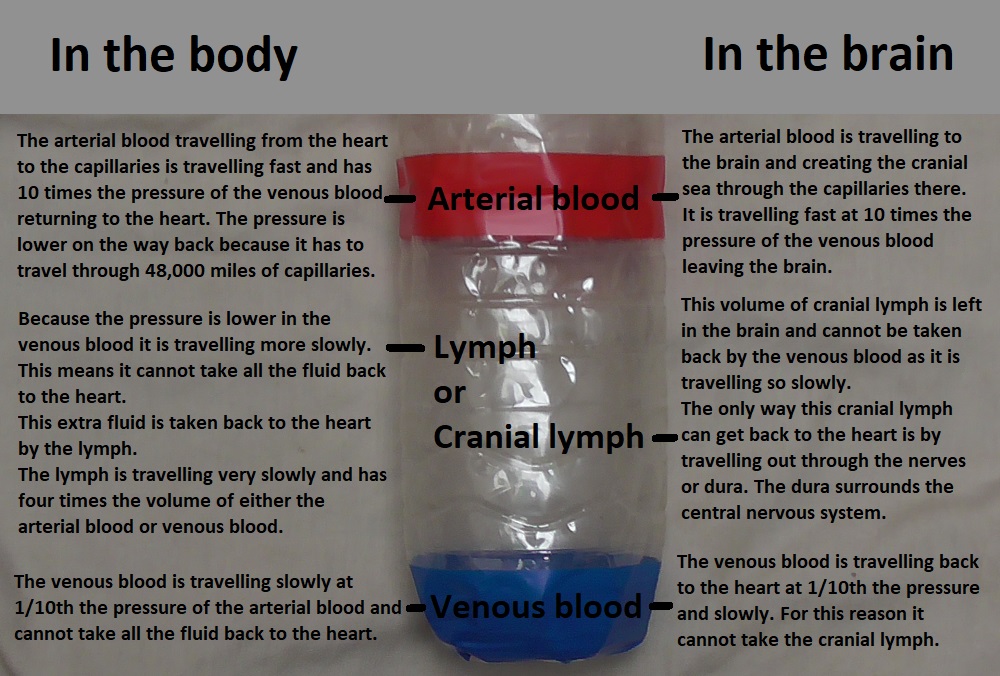
The only way for cranial sea to leave the brain or spine other than by the venous blood is to leave through the dura and the nerves which are the outer face of the central nervous system. This means that the central body of cranial lymph shown in the picture has to leave via the dura and nerves. For myself I think the cranial sea is mainly flowing out through the nerves as they are open vessels and there is nothing there to stop the cranial sea flowing out. Even though the cranial sea can flow out through the dura which is the membrane around the whole central nervous system I think it flows through this quite slowly as it is a thick membrane.
The cranial sea is 99% water and the fundamental principle of water in our body is that it can flow through any cell or membrane anywhere in the body via osmosis.
The cerebrum is 85% of the volume of the whole central nervous system. As the cerebrum is above the tentorium and all of the cranial nerves are below the tentorium that means the cranial sea/lymph has to flow down through the tentorium to be able to leave via these nerves. There is a hole in the tentorium where the brainstem rises up through it. The cranial sea can flow down through this hole by going around the brainstem, also by flowing down through the glial cells in the brainstem or through the cerebral aqueduct between the third and fourth ventricles. It is good to remember that as with the cerebrum the brainstem is more sea than solid structure. It is 90% water with the composition of soft jelly. The cranial sea easily migrates around and between the glial cells

This picture shows the cranial sea migrating through the glial cells towards the brainstem to leave the cerebrum. A lot of this fluid flows into the lateral ventricles which are wrapped around the thalamus which is the top of the brainstem.
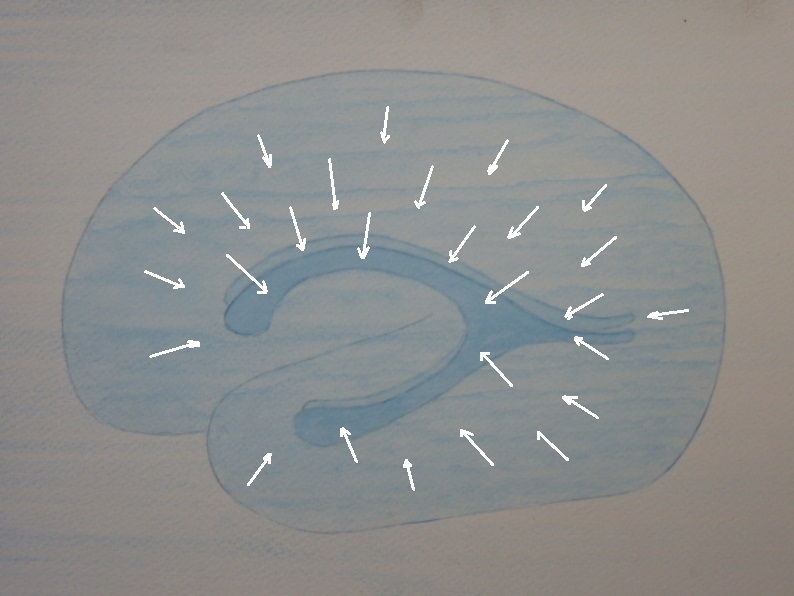
This picture shows the lateral ventricles wrapped around the thalamus and the third ventricle centre inside the thalamus the cranial sea flows through the thalamus down the brainstem and through the whole in the tentorium
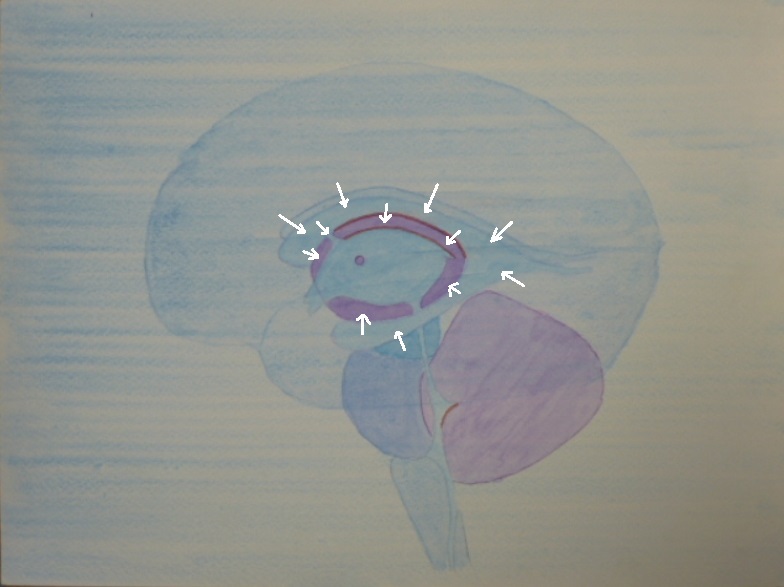
The Choroid plexus shown in red is part of the thalamus. This is the back of the thalamus and the choroid plexus will travel forwards and out along the the bottom sides of the thalamus. The choroid plexus is where the ventricles join to the thalamus so this will also be showing the back of the two lateral ventricle.
The ventricles receive the cranial lymph that has been flowing through the glial cells of the cerebrum towards the brainstem. All of the oxygen and glucose in this cranial lymph have been used by the glial cells and has produced carbon dioxide. This flows into the ventricles and to the choroid plexus. The choroid plexus filters out the CO2 and produces new cranial sea with oxygen, glucose, and salt which flow directly into the body of the thalamus as food and breath.
The textbooks say that the choroid plexus filters out the carbon dioxide from the cranial lymph as well as creating new cranial sea. This is the only way that the venous blood in the choroid plexus can be utilised. From what I can see the blood supply to the choroid plexus is about a quarter of the blood supply to the brain. So the venous blood travelling back from the choroid plexus is a quarter of the brains detoxification ability.
Some of this new cranial fluid also flows through the interventricular foramen into the third ventricle in the centre of the thalamus. The third ventricle is shown in light blue in the centre of the thalamus in the picture above.
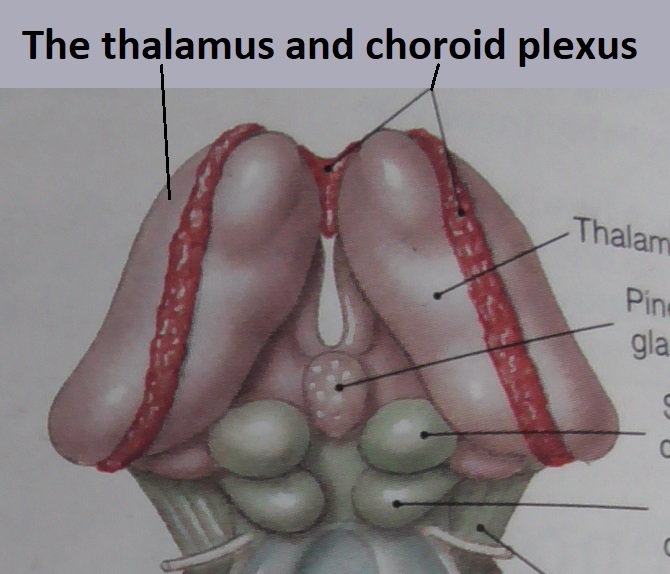
Choroid plexus is part of the thalamus and as the flow of cranial sea is inward the new cranial sea just flows into the thalamus and becomes food and breath for the glial cells there. It is good to remember that the glial cells are joined together by tentacles and there's plenty of room for the cranial sea to flow through them. This is exactly the same as everywhere else in the body the oxygen and nutrients come out of the blood they are used straightaway locally by the cells there, this produces carbon dioxide which returns via the venous blood and lymph. Everything happens locally and instantly.
 ventri.jpg)
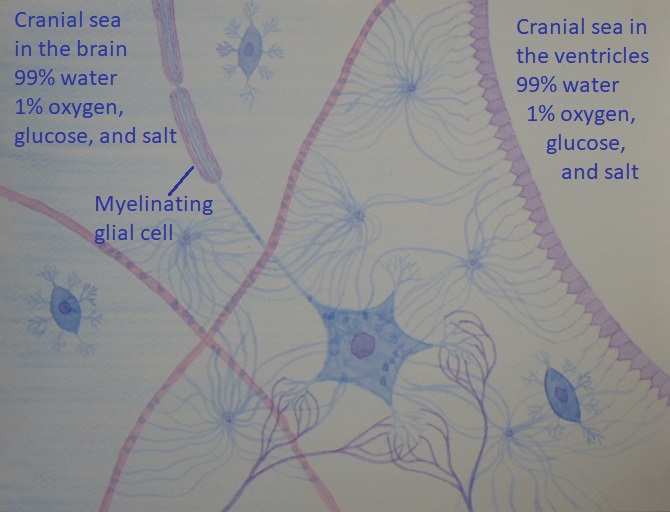






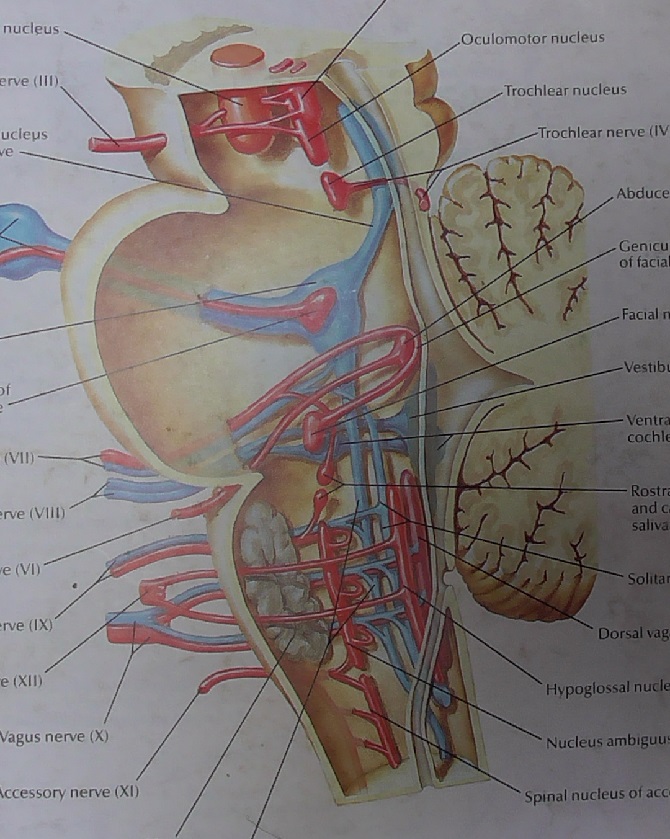
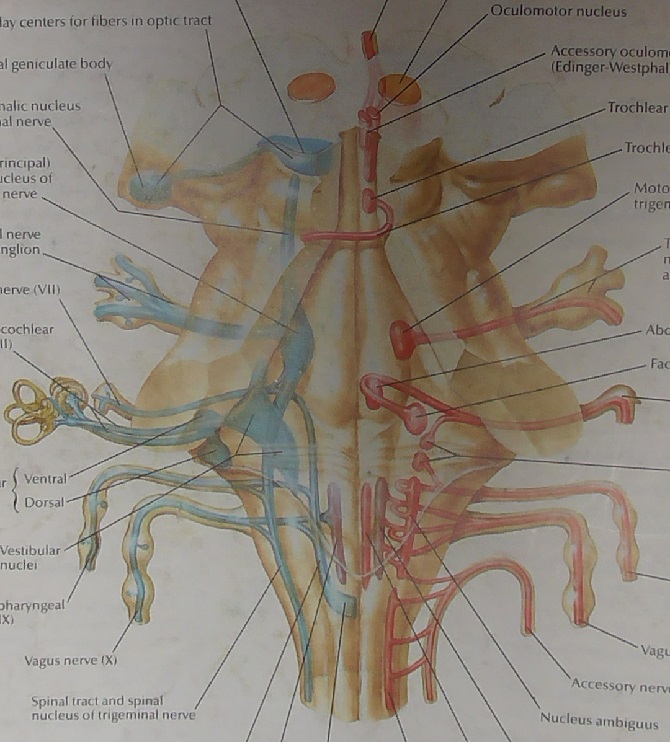
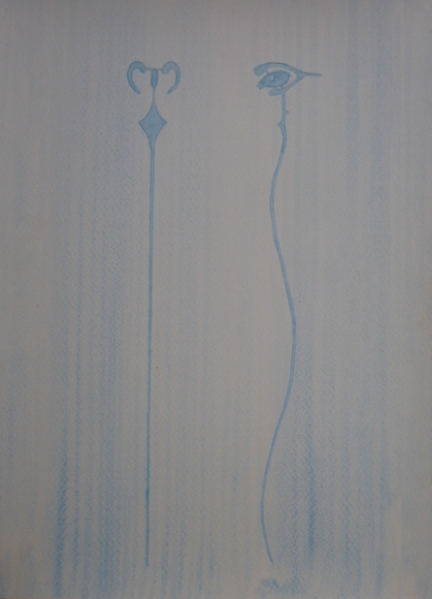
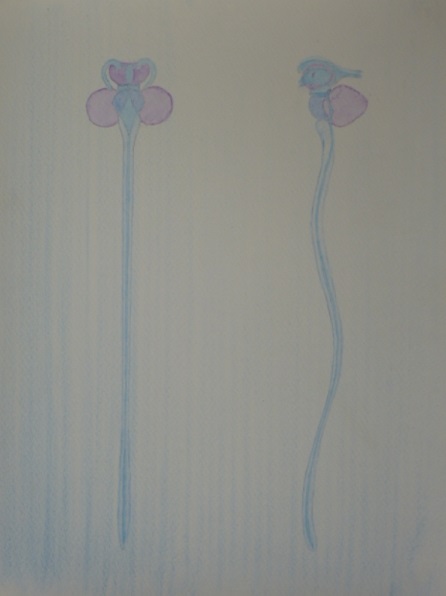

 670.jpg)